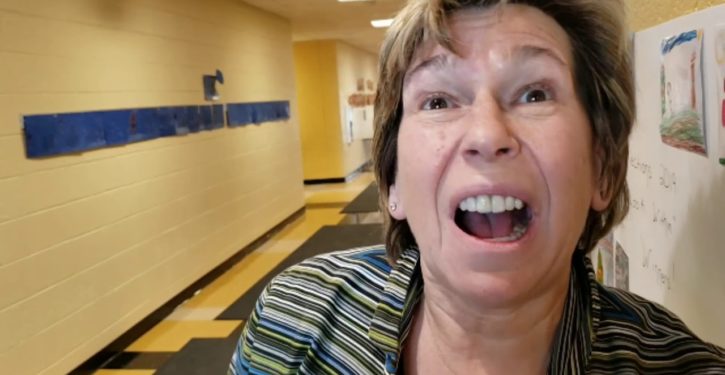
Teachers unions would rather work for the Democratic Party than support policies that keep teachers safe. As the Illinois Policy Institute notes, “The National Education Association and the Illinois Education Association spent just 8% of the money they took in on representing teachers, which should be their main task.”
In fact, NEA spent more on politics than it did on representing its members.
NEA and IEA spent a combined $659 million in 2022, according to the unions’ LM-2s, which are reporting documents the unions filed with the U.S. Department of Labor.
Yet just $50 million of that was on “representational activities,” which the department states are activities “associated with preparation for, and participation in, the negotiation of collective bargaining agreements and the administration and enforcement of the agreements.”
That means less than 8% of IEA and NEA’s combined spending was on representing teachers, the core purpose of the union. The rest was spent on politics, administration and other union leadership priorities.
That could be why so many teachers are leaving the union. Since 2017, NEA has seen nearly 203,0000 teachers and other public school employees nationwide stop paying dues or fees to the union. That includes more than 6,000 in Illinois.
Most of a teacher’s dues money doesn’t stay local, but instead flows up the chain to the national and state affiliates….
NEA also spent an additional $119.6 million on “contributions, gifts and grants” – three times more than it spent on representational activities. Many of those contributions were also political in nature, such as:
-
-
-
$2.5 million to For our Future Action Fund, which claims to “build progressive power”
-
$500,000 to Building Back Together, the organization “advanc[ing] the policy agenda of the Biden-Harris Administration”
-
$450,000 to Strategic Victory Fund, which seeks to build “the infrastructure needed to build long-term progressive agendas and issue advocacy in states”
-
$395,000 to Chicago-based Midwest Academy, a training organization that claims “empowering progressive organizers is our mission”
-
$300,000 to America Votes, the “coordination hub of the progressive community”
-
$270,000 to Democracy Alliance, an organization seeking to “advance progressive policy reforms”
-
$225,000 to State Innovation Exchange, which equips legislators to “move bold, progressive public policy”
-
$150,000 to Progressive Caucus Action Fund, which publishes a “progressive playbook.”
-
-
The National Education Association’s Colorado chapter passed a Marxist resolution denouncing capitalism, wrongly blaming it for the “exploitation of children” and declines in educational quality. The union was wrong to depict capitalism as bad for children. Communist regimes have much higher child death rates than capitalist countries. Millions of children died in Communist China’s Great Leap Forward, an artificial, man-made famine. One example was when a starving “teenage orphan kills and eats her four-year-old brother” to survive during the famine. Communist North Korea suffered a famine in the 1990s that killed millions of people, while capitalist South Koreans right across the border had plenty to eat.
Teachers unions have supported state laws and school district policies making it harder to suspend disruptive or willfully defiant students, even though that resulted in disruptive students remaining in the classroom where they attacked teachers. The National Education Association claims that “suspensions and expulsions are doing more harm than good,” citing the fact that “Black students are suspended and expelled at a rate three times greater than White students” (even though those higher suspension rates reflect higher misconduct rates, not racism).
Record numbers of teachers were physically attacked in America’s schools, as policies were changed by local school boards and state governments to make it harder to suspend students who repeatedly defy their teachers. CNS News reported:
A record 220,300 public school teachers reported that they were physically attacked by a student during the 2015-2016 school year, according to a report jointly published this month by the National Center for Education Statistics and the Bureau of Justice Statistics.
The 220,300 public school teachers who said they were physically attacked by a student in 2015-2016 is up from the 197,400 who said they were attacked by a student in 2011-2012 (which is the last school year before 2015-2016 for which teachers were surveyed on the question).
Teachers unions depict school suspensions for misconduct as “systemic racism” and “the school to prison pipeline” because suspended students are more likely to be black, and some suspended students later go on to commit crimes that land them in prison.
But the reason why African-American students made up a disproportionate share of suspensions in general is because a disproportionate share of the students who violate school rules are African-American. A 2014 study by John Paul Wright and several other professors in the Journal of Criminal Justice found that higher rates of “prior problem behavior” among black students — not racism — explained why black students are suspended at a higher rate.
Black students are not singled out for “willful defiance” suspensions more than other suspensions. The black share of suspensions for willful defiance is lower than the black share of suspensions for misconduct in general. In California, blacks are suspended for misconduct at more than four times the white rate, and nearly 15 times the rate for Asians, who have the lowest suspension rate of all races. (See Tom Loveless, The 2017 Brown Center Report on American Education: How Well Are American Students Learning?, Brookings Institution, March 2017, pg. 25).
Supporters of banning suspensions for “willful defiance” cite its allegedly “highly subjective” nature. But that is not a reason to tolerate willful defiance that undermines classroom learning. A federal appeals court pointed that out in striking down as an unconstitutional racial quota a rule that forbade a “school district to refer a higher percentage of minority students than of white students for discipline unless the district purges all ‘subjective’ criteria from its disciplinary code.” As the court observed, “important disciplinary criteria (such as disrupting classes) are unavoidably judgmental and hence ‘subjective.’” (See People Who Care v. Rockford Board of Education, 111 F.3d 528, 538 (7th Cir. 1997)).
But that is not a reason to get rid of such rules or thwart their enforcement. They are essential to creating an environment where learning can occur.
Also, subjectivity in discipline isn’t why blacks are suspended at a higher rate than whites. The federal appeals court in Philadelphia noted in 1996 that “statistical data” showed larger racial differences in discipline rates for serious, “very objective” offenses than for minor, “less objective” offenses. It also cited a lack of evidence for the notion that “misbehavior” occurs at the same rate among all “racial groups.” (See Coalition to Save Our Children v. State Board of Education of Delaware).
Curbing suspensions of willfully defiant students harms innocent African-Americans by reducing their ability to learn and be safe. After all, much violence is black-on-black, and when a black student constantly disrupts class, that harms black classmates’ ability to learn. After suspensions were curbed in New York City, the Manhattan Institute’s Max Eden found that “schools where more than 90% of students were minorities experienced the worst” effects on school climate and safety. Indeed, the harm from curbing suspensions had “a disparate impact by race and socioeconomic status.” Eden noted in the New York Post that another “study by a University of Georgia professor found that efforts to decrease the racial-suspension gap actually increase the racial achievement gap.” Joshua Kinsler found that “in public schools with discipline problems, it hurts those innocent African American children academically to keep disruptive students in the classroom,” and “cutting out-of-school suspensions in those schools widens the black-white academic achievement gap.”
The higher black suspension rate is not surprising to many observers, given the higher black crime rate and the fact that black kids are more likely to come from struggling single-parent households that fail to instill discipline. As even the liberal Brookings Institution has noted, “Black students are also more likely to come from family backgrounds associated with school behavior problems; for example, children ages 12–17 that come from single-parent families are at least twice as likely to be suspended as children from two-parent families.” (2017 Brown Center Report on American Education, pp. 30-31). The homicide rate is 10 times higher among black teens than white teens. And the Supreme Court rejected the “presumption that people of all races commit all types of crimes” at the same rate, as being “contradicted by” reality, in its decision in U.S. v. Armstrong.



